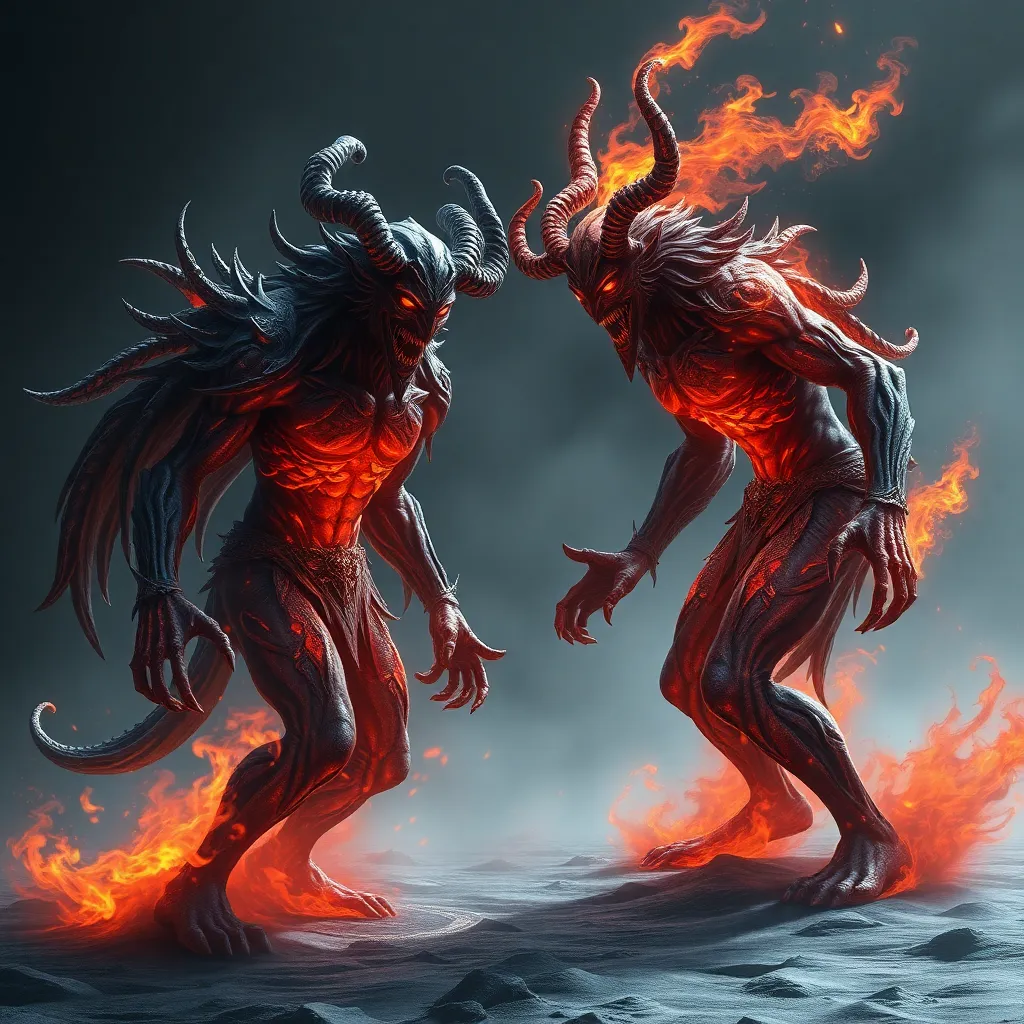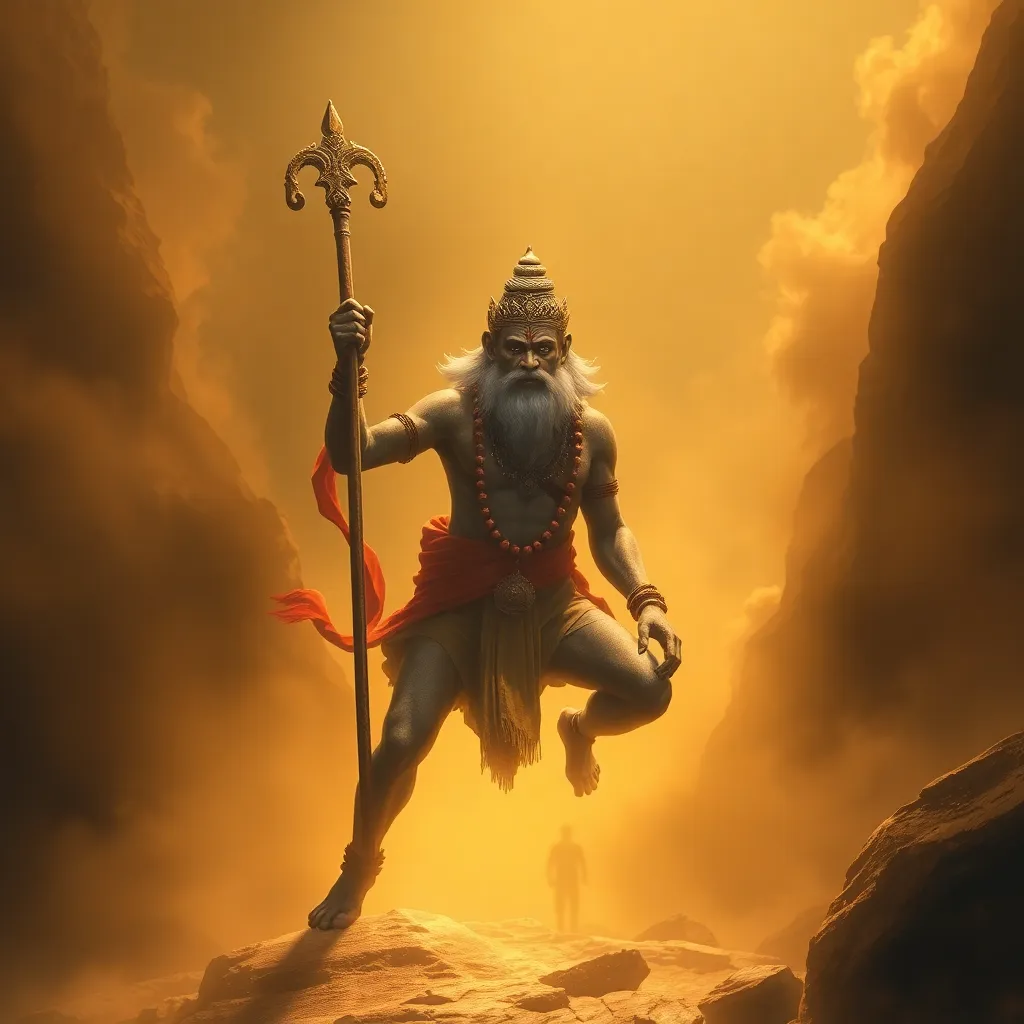The Shapeshifters: Ifrit and Their Ability to Transform
I. Introduction
Ifrit, a term that evokes images of fiery beings and powerful spirits, holds a significant place in mythology, particularly within Arabian and Islamic contexts. Defined as a type of jinn or supernatural creature, Ifrits are often depicted as formidable entities possessing the ability to shape-shift and manipulate their environment. This article explores the concept of shapeshifting as a cultural motif, delving into the importance of Ifrit across various mythologies and the rich tapestry of narratives surrounding these enigmatic beings.
II. Historical Origins of Ifrit
The roots of Ifrit can be traced back to ancient Arabian folklore, where they were initially considered malevolent spirits associated with fire and chaos. Over time, the character of the Ifrit evolved, becoming more nuanced and complex.
In Islamic texts, Ifrit appears in various stories, including the famous tale of Solomon, where they are depicted as beings of immense power and intelligence. Their significance is marked by their duality; while they can be vengeful and destructive, they also embody wisdom and strength. This dual nature reflects the broader themes of good and evil found in many mythological frameworks.
III. Characteristics of Ifrit
Ifrits are often characterized by their striking physical traits and elemental associations. They are commonly described as having:
- Fiery appearances, often surrounded by flames
- Large, imposing forms that invoke fear
- Ability to manipulate fire and heat
In addition to their physical characteristics, Ifrits possess distinct personality traits. They are frequently depicted as:
- Intelligent and cunning
- Vengeful towards those who wrong them
- Occasionally benevolent, helping those they favor
The duality of the Ifrit’s nature is a recurring theme in various narratives, showcasing them as both benevolent protectors and malevolent threats, which adds to their allure and complexity in folklore.
IV. The Art of Shapeshifting
Shapeshifting is a prevalent theme in mythology, representing the ability to transform one’s physical form or essence. Ifrits utilize this ability to adapt to different situations, often changing into various animals or even human forms to achieve their goals.
The significance of transformation in Ifrit lore lies in its symbolic representation of power and control. By shapeshifting, Ifrits can manipulate perceptions and realities, asserting their dominance over mortals and other beings.
V. Symbolism of Transformation
Cultural interpretations of shapeshifting vary greatly, but they often center around themes of change, adaptability, and identity. In the context of Ifrit, their transformative abilities serve as a metaphor for:
- Personal growth and evolution
- Societal changes and challenges
- The fluidity of morality and ethics
Psychologically, the motif of transformation in folklore reflects humanity’s struggle with identity and the fear of the unknown. Ifrits, in their shifting forms, embody the chaotic nature of existence, reminding us of the ever-changing landscape of human experience.
VI. Ifrit in Popular Culture
The representation of Ifrit has transcended ancient texts, finding a place in modern literature, film, and art. Ifrits often appear in:
- Fantasy novels, where they are depicted as powerful allies or adversaries
- Video games, showcasing their elemental powers and shapeshifting abilities
- Films and animations, contributing to the visual diversity of mythical creatures
Modern adaptations of Ifrit have broadened their interpretations, allowing for a deeper exploration of their characters. This evolution has influenced contemporary fantasy genres, where themes of transformation and duality resonate with audiences.
VII. Comparative Analysis with Other Shapeshifters
When compared to other mythological shapeshifters, such as werewolves and kitsune, Ifrits share several similarities and differences.
Similarities include:
- The ability to change forms at will
- Representation of both good and evil
- Connection to elemental forces (fire for Ifrit, nature for kitsune, lunar cycles for werewolves)
However, the motivations and cultural significance of these shapeshifters differ:
- Ifrits often embody the struggle between chaos and order
- Werewolves represent the duality of human nature and primal instincts
- Kitsune often symbolize wisdom and transformation as a means of protection
This comparative analysis highlights shapeshifting as a universal archetype, transcending cultures and time periods.
VIII. Conclusion
In summary, Ifrits represent a compelling intersection of mythology, transformation, and human experience. Their shapeshifting abilities not only enhance their narratives but also serve as a reflection of the complexities of identity and morality. The enduring legacy of Ifrit in modern storytelling underscores the timeless nature of these themes, inviting us to explore the depths of change and adaptability within our own lives.
Ultimately, the role of transformation in folklore, exemplified by the Ifrit, continues to resonate with us, reminding us that change is an inherent part of the human experience, and that within it lies the potential for growth, understanding, and resilience.




